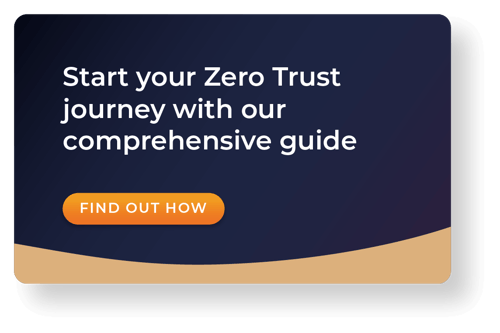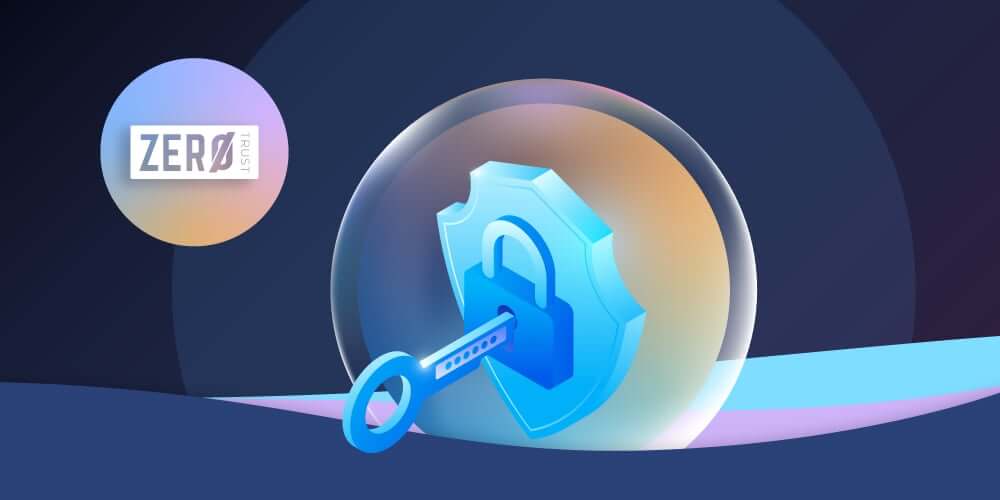Learn How a New Security Mindset Can Build Strength and Resilience Throughout Your Organization.
Before the pandemic, digital transformation was aspirational. Today, it’s universal. Businesses of every size and scope are now fully digital, mobile, and cloud-dependent. Organizational assets and sensitive data exist within every corner of IT systems — and the digital walls have eyes. New vulnerabilities require a foundational change in how we view security.
As Yash and I noted in our Zero Trust blog series, companies must accept that every core business function — from HR to accounting and sales — now relies on technology. The only way to protect both your remote workforce and your IT ecosystem is to assume continuous risk and to reassess trust every time access is attempted. Welcome to the era of Zero Trust.
Traditional security models assume that internal traffic is safe. But in today’s reality, internal actors account for 36% of data breaches in the enterprise — and 44% among SMBs. These users are not necessarily malicious. Often, they’re merely lax with their passwords and in many cases, have accumulated unnecessary privileges over time.
The Zero Trust security paradigm, by contrast, considers everything and everyone untrustworthy until proven otherwise. Access should be evaluated in each case, passed through a risk and trust assessment, and then only granted access necessary to do the job. Each of these requests undergoes an evaluation based on micro-segmentation of user types, locations, and other identifying data to determine when to trust, what to grant access to, and for how long.
Using identity access management (IAM), Identity Governance and Administration (IGA), and Cloud Privileged Access Management (CloudPAM), Zero Trust Identity extends beyond simple access control into continuous monitoring, management, remediation, and recovery. For example, IGA systems can evaluate risk and trust, assigning only the necessary privileges needed.
By eliminating or significantly reducing standing privilege, organizations can limit the scope of the damage if credentials are compromised or if malware gets through. This approach not only secures remote workforces better than conventional methods, it also improves productivity and organizational agility.
However, the Zero Trust framework isn’t a point-based solution you can set and forget. It’s a new mindset that requires buy-in from every level of your organization. This post explores the significant benefits of shifting away from the traditional network security layer and embracing a modern, identity-based Zero Trust architecture.
1. Gain Greater Visibility Across the Enterprise
Because a Zero Trust approach never assumes anyone or anything is trusted, you decide what to cover in your security strategy based on criticality and risk. Ephemeral resources such as containers and serverless processes are a big challenge in the modern cloud era. A Zero Trust framework needs visibility into legacy and contemporary resources and requires that organizations build a solution that can discover, onboard, and monitor access to those resources.
Once you’ve established monitoring to cover all your assets and activities, you’ll have complete visibility into precisely who (or what) accesses your network — including the time, location, and applications related to every access request. An optimal security system flags unusual behaviors and Separation of Duties (SoD) conflicts, tracking all activity.
2. Simplify IT Management
Because Zero Trust rests on the foundation of continual monitoring and analytics, you can use automation to evaluate access requests. If the privileged access management (PAM) system judges key identifiers in the request to be low-risk, access is automatically granted. Not every request needs to be approved — only when the automated system flags requests as suspicious.
This benefit is significant. According to a 2021 report, 62% of organizations report a problematic cybersecurity skills shortage. The more tasks an organization can safely automate, the fewer human resources they need, and the more time teams can devote to innovation and manual administration.
3. Optimize for Existing Security Staff
A Zero Trust approach also helps your security team work smarter. Centralized monitoring means you can generate reliable data stored in a single location and facilitate strong analytics, giving your team new insights that can help them maintain a more secure environment. In a Zero Trust architecture, a unified event store can monitor and analyze activity to reduce the ‘noise’ and help operations staff focus on the real threats.
4. Improve Data Protection
A Zero Standing Privilege framework combined with just-in-time (JIT) access can also reduce rogue employees or malware from gaining access to large portions of your network. If malware breaches your firewall, it can quickly find and extract your customer data or intellectual property, damage your reputation, and impact your competitive advantage.
Limiting what a user can access and how long they can access it goes a long way in reducing the impact of a breach. If access is restricted to only a limited dataset — and is time-bound — bad actors have a much lower chance of finding the data they’re seeking.
5. Secure Your Remote Workforce
According to a recent global research report from KuppingerCole and HP, half of office workers use their work devices for personal use, and 84% of IT decision-makers worry this increases their company’s risk of a security breach.
When users are spread across the world — and data is spread across the cloud — firewalls are no longer sufficient. With the Zero Trust approach, identity is the perimeter. Identity is attached to the users, devices, and applications seeking access, offering powerful protection for workers and data in any location.
6. Streamline User Access
During the pandemic, the rapid rollout of VPNs led to configuration errors and security failures that opened the door to breaches and created workflow chokepoints. Employees faced performance issues when they used VPNs to access their needed resources. With a Zero Trust framework, automation streamlines access to only what users need, without waiting on administrators for approval. Manual intervention is only required if a request is flagged as higher risk.
7. Achieve Continuous Compliance
A Zero Trust architecture also helps support continuous compliance by evaluating and logging every access request. Tracking each request’s time, location, and related application creates a seamless audit trail. This adjoining chain of evidence helps minimize the effort required to comply with audits, improves the speed and efficiency of upholding governance — and impacts the bottom line. According to a 2021 IBM report, organizations with a mature Zero Trust approach reduced data breach costs by $1.76 Million.
Take the Zero Trust Approach
Zero Trust adoption is a complex process that requires cultural change at all levels — every employee needs to understand and contribute to it. Business leaders, practitioners, and stakeholders across the organization must work together to implement new technologies, ways of working, and policies that support business agility and enhance protection.
While moving toward this new identity-based architecture is a long-term journey, the benefits are immediate and go far beyond security. From making better use of your resources to facilitating compliance to enhanced productivity, a Zero Trust framework not only improves your overall security posture, it can help you build strength and resilience throughout your organization.









